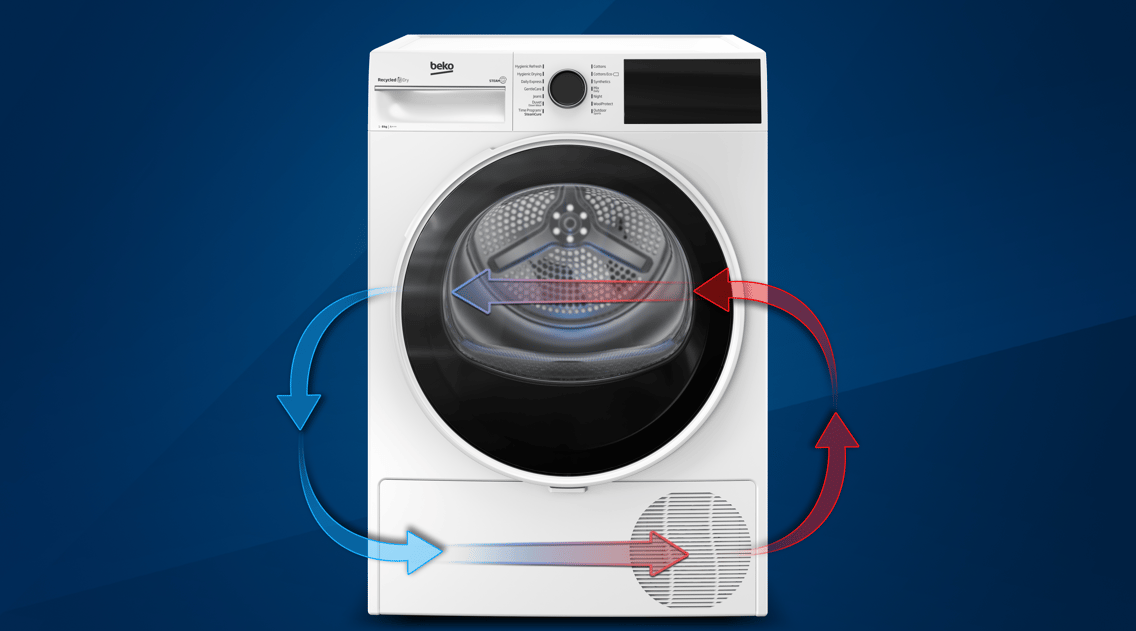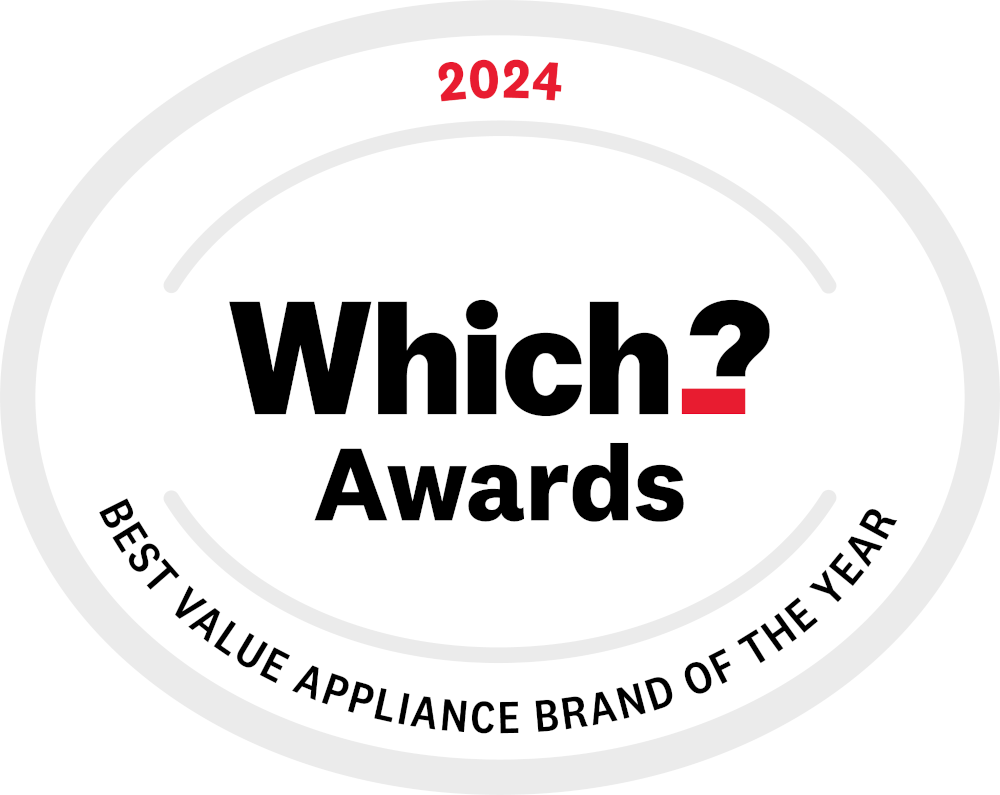Heat Pump Tumble Dryers: All You Need to Know
Heat pump tumble dryers have become a popular choice for consumers looking to reduce their energy bills. Unlike traditional vented or condenser dryers, heat pump models use advanced technology to dry clothes more efficiently, making them an excellent option for modern homes. These dryers work by recycling warm air within a closed heat-exchange system, significantly reducing the amount of energy required to dry clothes. While they may have a higher upfront cost and longer drying times, their benefits, such as lower operating costs and gentler drying, often make them a worthwhile investment.
In this guide, we'll explore the key features, pros, and cons of heat pump tumble dryers, providing you with the information you need to decide if this appliance is the right fit for your household. From understanding how they work to evaluating their impact on your electricity bills, this comprehensive guide will help you make an informed decision when choosing your next tumble dryer.
What is a heat pump tumble dryer?
A heat pump dryer combines efficiency and innovation to dry clothes using advanced technology. Unlike traditional vented or condenser dryers, which use a heating element to generate hot air, heat pump dryers recycle warm air within a closed-loop system. Heat pump tumble dryers operate at lower temperatures to dry clothes, , making them far more energy-efficient. This approach significantly reduces energy consumption while maintaining effective drying performance. Whether you're looking to reduce your energy consumption from tumble drying or simply want a dryer that's kinder to your favourite clothes, a heat pump dryer offers the perfect blend of efficiency and performance.
How do heat pump tumble dryers work?

Heat pump tumble dryers operate using a closed-loop heat exchange system that constantly circulates hot air. The process begins with the dryer drawing in ambient air, which is heated by the heat pump. This warm air is then passed through the drum to evaporate moisture from the clothes which is then converted. back into water, which is collected in a tank. Unlike vented or traditional condenser models, heat pump dryers recirculate warm air through the drum to continue the drying process.
This system significantly reduces energy use because the dryer doesn't need to constantly generate new heat, unlike condenser and vented models. Additionally, the heat pump system operates at lower temperatures, making it gentler on clothes while still achieving effective drying results. To get the best out of your machine, make sure the filters and the evaporator are cleaned regularly. This information is provided in the appliance manual.
Average drying times
One of the main differences between heat pump tumble dryers and other models is the drying time. For example, an 8kg condenser dryer typically requires 142 minutes for a cotton eco cycle, while a heat pump dryer with an A+ rating takes about 209 minutes and an A++ model takes approximately 197 minutes. While heat pump dryers are more energy-efficient, they generally take longer to complete a cycle compared to vented or standard condenser dryers. Drying time can vary depending on the load size and fabric type.
Heat pump dryers take longer to dry clothes because they operate at lower temperatures, which requires more time to evaporate moisture. However, this gentler approach is kinder to your clothes and offers significant energy savings.
Advantages of heat pump tumble dryers
Heat pump tumble dryers offer a host of benefits, making them an excellent choice when shopping for a new tumble dryer. While air-drying is the most energy-efficient method for drying clothes, using a tumble dryer offers the convenience of drying regardless of weather conditions or garden access. Additionally, by controlling moisture levels, tumble dryers help minimise risks for individuals prone to allergies, asthma, or hay fever and can also reduce the likelihood of mould formation in the home.
In addition to these advantages, heat pump tumble dryers stand out for their high energy efficiency, delivering significant cost savings over time. Their ability to operate at lower temperatures not only conserves energy but also minimises wear and tear on your clothes, helping them last longer.
Lower operating costs
One of the key advantages of heat pump tumble dryers is their energy efficiency. You can save up to £463* per year in energy with Beko Heat Pump Tumble Dryers. Heat pump tumble dryers can consume up to 50% less electricity than traditional vented or condenser models by operating at lower temperatures. Since they recycle warm air instead of continuously heating new air, energy consumption is dramatically reduced.
For example, a standard 8 kg condenser dryer typically consumes around 561 kWh per annum, with a standard cotton programme at full load using 4.75 kWh per cycle. In comparison, an 8 kg A+ heat pump dryer consumes only about 265 kWh per annum and uses 2.18 kWh per cycle for the same cotton programme. The energy consumption is even lower for A++ or A+++ heat pump models, offering even greater savings. This difference can lead to substantial savings on your electricity bill, especially if you use your dryer frequently.
We recognise that time might be a concern for some users. That’s why we’ve developed RapiDry™ technology for our heat pump tumble dryers, enabling you to dry 5kg of laundry in one hour. While it’s not as efficient as standard cycles, it can provide a solution when in a hurry.
Protection for clothes

When considering using a tumble dryer, always check the garments care label first, as not all fabrics are suitable for tumble drying. Heat pump tumble dryers operate at lower temperatures, which is beneficial for delicate fabrics. Unlike traditional dryers that can expose clothes to high heat, potentially causing damage or shrinkage, heat pump dryers gently dry clothes, preserving their quality and prolonging their lifespan. This is particularly advantageous for fabrics such as wool, silk, and synthetics, which can be sensitive to high heat.
Lower temperatures mean less stress on fibers, reducing the risk of wear and tear. Over time, this gentle drying can help maintain the appearance and feel of your clothes, making them look newer for longer.
Disadvantages of heat pump tumble dryers
While heat pump tumble dryers offer numerous advantages, they also come with some potential drawbacks that consumers should consider, such as longer drying times, a higher initial cost, and weight. Here is a breakdown of these potential cons and how you can address them to maximise the long-term value of investing in a heat pump tumble dryer.
Higher purchase price
One of the most significant disadvantages of heat pump tumble dryers is their higher upfront cost. These models are generally more expensive than traditional vented or condenser dryers, largely due to the advanced technology they use. The initial investment can be a hurdle for some consumers, particularly when comparing prices with other types of dryers.
However, it's important to factor in the long-term savings on energy bills. Over time, the lower operating costs can offset the higher purchase price, making heat pump dryers a more cost-effective choice in the long run. Additionally, Beko tumble dryers are designed with durability in mind and undergo rigorous testing to ensure their quality. All our tumble dryers also come with a Beko 10-Year Parts Guarantee, providing added assurance of their long-term reliability.
Longer drying times
As mentioned earlier, heat pump tumble dryers tend to have longer drying times compared to standard condenser models. This can be a drawback for large families with a lot of laundry to dry. However, this can be managed by planning your laundry schedule to accommodate the additional drying time required by a heat pump dryer.
Moreover, for those who can plan their laundry routine and prioritise energy savings and garment care, the longer drying times may be a worthwhile trade-off.
Final thoughts and recommendations
Heat pump tumble dryers are an excellent choice for those looking to save on energy costs, and protect their clothes from damage. While they may have a higher purchase price and longer drying times, the benefits often outweigh these drawbacks.
One of the best performing heat pump tumble dryers is the A+++ rate 9kg Heat Pump Tumble Dryer, with an annual energy consumption of 194.4 kWh. This model features sensor programmes that monitor moisture and automatically stop the cycle when the optimal dryness is achieved. With Beko's SteamCure technology, you can enjoy fresh, crease-free clothes without needing a full wash cycle.
Another strong contender is the 8kg Heat Pump Tumble Dryer with RapiDry, boasting an annual energy consumption of 236.0 kWh. Thanks to the RapiDry function, you can efficiently dry up to 5kg of laundry in just one hour, saving time whilst maintaining a higher energy efficiency, compared to standard dryers.
For an integrated solution, the A++ rated 7kg Integrated Heat Pump Tumble Dryer is another excellent choice, with sensor drying programmes and an annual energy consumption of 211.4 kWh.
If efficiency and garment care are your priorities, a heat pump tumble dryer could be a great investment. Explore Beko's best-performing heat pump tumble dryers to find the model that fits your needs.
Frequently Asked Questions Heat Pump Tumble Dryers
Do heat pump tumble dryers need a vent?
No, heat pump tumble dryers do not need a vent. Unlike vented dryers that expel hot air outside through a vent, heat pump dryers operate in a closed-loop system. They recycle the warm air within the machine, condensing the moisture into water and collecting it in a reservoir or draining it away.
This means you can place a heat pump dryer virtually anywhere in your home without the need for an external vent, making them incredibly versatile for a range of spaces, including apartments and homes without external walls. Additionally, their design reduces installation complexity, allowing for easy setup similar to standard condenser dryers.
How efficient are heat pump tumble dryers?
Heat pump tumble dryers are incredibly efficient, using up to 50% less energy than traditional vented or condenser models. By recycling warm air within a closed system, they significantly reduce the amount of electricity required for drying, leading to substantial energy savings over time.
Are heat pump tumble dryers suitable for all types of fabrics?
Not all clothes are suitable for tumble drying, so it’s important to check the garment’s care label for guidance. Heat pump tumble dryers, which operate at lower drying temperatures, are particularly gentle and can be suitable for delicate fabrics like wool and silk, in addition to regular laundry. Select Beko heat pump tumble dryers have a dedicated wool programme.
How often should I clean the filters in a heat pump dryer?
To maintain efficiency and performance, it's recommended to clean the filters and evaporator regularly, ideally after every few cycles. For detailed instructions on how to clean them, refer to our guide or check your appliance manual.
Is it worth paying more for a heat pump dryer?
While the initial cost is higher, the energy savings and extended lifespan of your clothes can make it a cost-effective choice in the long run. Explore Beko’s range of Heat Pump Tumble Dryers to find the most efficient and high performing option for your home.



